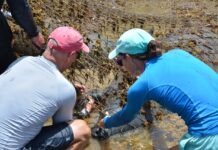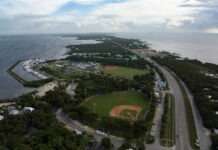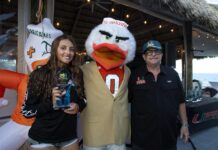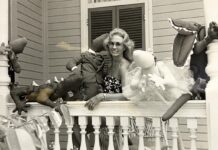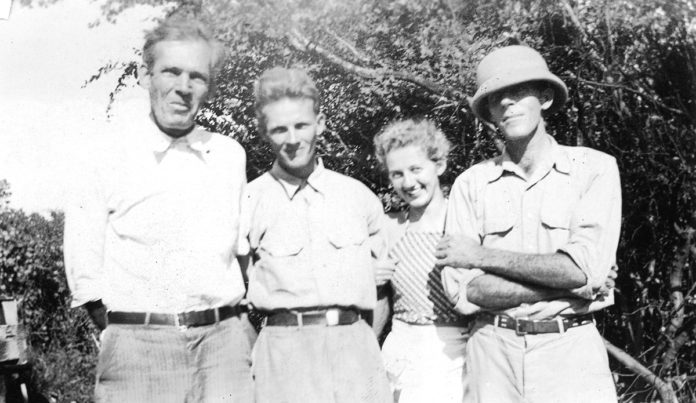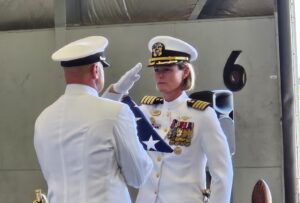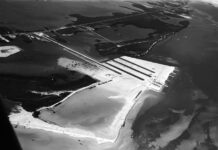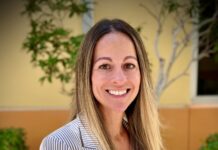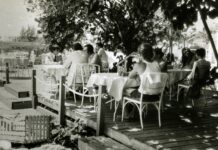It is difficult to tell a Key West or a Key Largo story without telling a Florida Keys story.
What time has done is produce a system of historical roots that connect one island to another.
For instance, when Henry Flagler roared into Key West on Jan. 22, 1912, it was a massive celebration. One of the groups entertaining the crowds and celebrating the moment was Frankie Papy’s band. They were led by a man playing his flute and dressed up as Uncle Sam. He wore a blue, high-top hat with white stars. The red and white tails of his jacket flapped as the band marched on playing “Yankee Doodle.”
Uncle Sam’s name was M. A. Thompson. Thompson is not remembered for his flute playing but his cigars. Like many others around the turn of the century in Key West, he owned and operated a cigar factory. Cigar making as an industry dates back to 1831 when William Hall had a small factory with about 50 employees. By 1890, Key West’s 200 cigar factories were producing approximately 100 million hand-rolled Cuban cigars annually.
In 1915, M.A. Thompson entered the cigar-making game and opened his Thompson Cigar Company. Toward the end of World War I (1917-1918), Thompson sent the troops overseas Thompson cigars, a tradition that would continue from war to war. In September 1919, a Category 4 hurricane passed in the neighborhood of 35 miles south of Key West before crossing the Dry Tortugas. Hurricane winds and storm surge devastated Key West.
As a result, many cigar factory owners decided to pack up and move their operation to Tampa, the “Cigar Capital of the World.” In 1920, the Thompson Cigar Company, too, moved to Tampa. The company was issued Tampa’s first postal permit in 1929, and it is now considered the oldest mail-order company in the country. To this day, it is still a flourishing business.
Thompson was also the father of Victor, Robbie, Marvin, Tony and Rose. Marvin, suffering a broken heart, left Key West at 19 and moved to a place on Key Largo that was once a farming community called Planter. Planter had been all but abandoned by the time Marvin arrived in 1919. All but a few of its former residents had moved closer to the railroad and the growing Tavernier community.
The year before, in 1918, Marvin’s father bought a 40-acre farm in the Tavernier area. According to his youngest son, Tony, who moved up to Planter in 1924, “20 acres of the farm was a producing citrus grove, ten acres was a sapodilla grove and the remainder was coconuts, tamarinds, and dates. He paid $1,000 for the farm with two wooden houses, two concrete cisterns, two boat docks, one Nassau dingy, one packing house for processing the produce of the farm and one storage shack, which the rats and rattlesnakes were using for their convention hall.”
In the 1920s, the Upper Keys were filled with farming communities. Kay Wilkinson wrote a wonderful account of her time living on Key Largo in the 1930s, in the Planter area and later in Tavernier, in her book “It Had To Be You.” She met several of the Thompson brothers and became close with both Marvin and Tony. In her book, Tony Thompson writes: “The day that I arrived in Tavernier the farmers looked to me like men from outer space. The shoes they were wearing had been re-soled from old automobile tire casings. Being inquisitive, I asked the farmers the purpose of these shoes. They laughed and replied that over the years the sharp-edged rocks on the Keys had been devouring the soles of their work shoes and that after many attempts to cope with this problem, this was the definitive answer.”
Kay recorded many of the details of her everyday life in the Keys, but also stories about her friends, including Tony and Marvin. About Marvin, she wrote that he “was very interested in real estate and he decided in 1925 to subdivide the land in Planter. He called it Palma Sola. If you remember back to the good old days, that was kind of the boom time. He had wild dreams that someday it would be a bustling community and he would build it up to have everything you would find in any other small town.”
Though the Florida land boom of the 1920s never materialized for Marvin, his father’s business success afforded him and the rest of the Thompsons the ability to take risks. Marvin was appointed a justice of the peace in 1927. His older brother Robbie served as a local constable. Tony, the youngest brother, would become a published poet.
Should you find yourself driving down Burton Drive and in the direction of Key Largo’s Harry Harris Park, you will be traveling through the old Thompson territory and some rich Florida Keys history. Also, the next time you imagine Henry Flagler’s train roaring into Key West on that glorious day in January, remember to think of M.A. Thompson playing his flute and leading the band in his top hat and tails. “I’m a Yankee Doodle dandy…”





